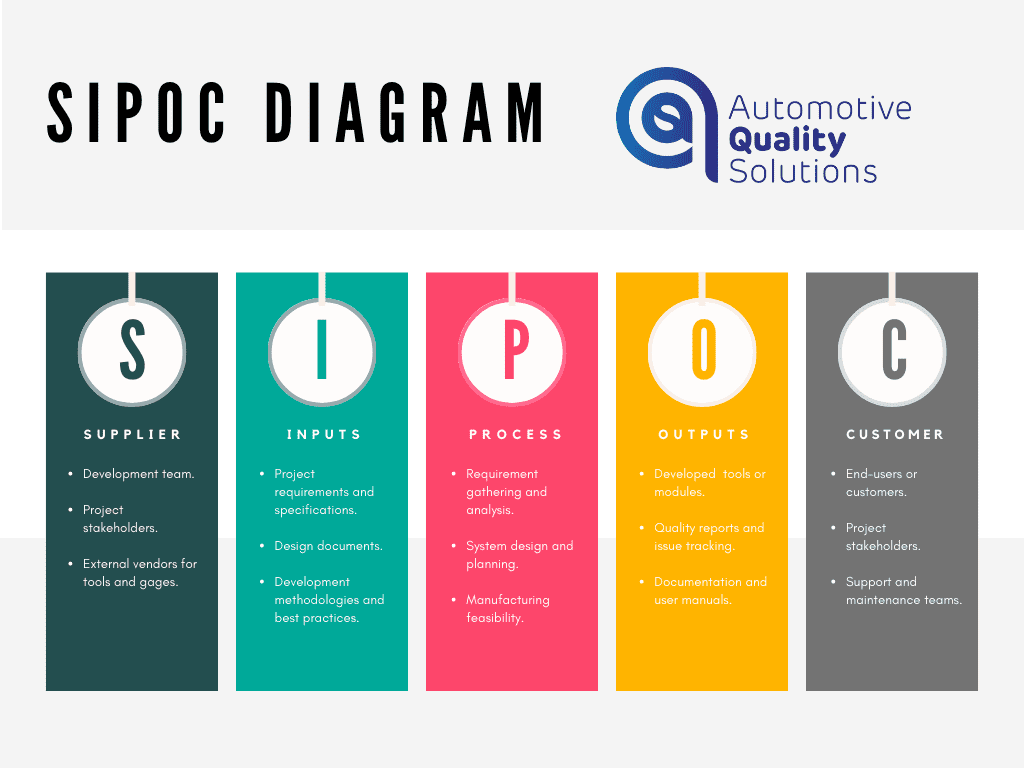In the realm of process improvement and quality management, the SIPOC tool plays a crucial role in enhancing an organization’s success by improving the understanding and effectiveness of processes.
In this article, we will explore what the SIPOC diagram is, its benefits, and how it can be effectively applied to streamline processes.
What is SIPOC?
SIPOC is an acronym that stands for:
Suppliers Inputs Process Outputs Customers
It serves as a visual and systematic representation of a process, offering an overview of its key components. Analyzing these components provides valuable insights into interprocess relationships and identifies potential areas for improvement.
Components of the SIPOC diagram
Suppliers: Suppliers are entities or individuals that provide inputs to the process. These inputs may include raw materials, information, requirements, or resources necessary to initiate the process.
Inputs: Inputs refer to the resources or data received from suppliers that are essential to start the process. Understanding and managing these inputs effectively aim to enhance the efficiency of the given process.
Process: This section outlines the step-by-step actions and activities that transform inputs into outputs. Identifying the process correctly enables the creation of a suitable visualization of its flow and helps pinpoint bottlenecks.
Outputs: Outputs represent the final results or outcomes delivered by the process. These could be end products or services that meet specific customer requirements.
Customers: Customers are individuals or groups that receive the process outputs. Understanding their needs is crucial for delivering products or services that exceed their expectations.

Figure 1. Graphical interpretation of SIPOC.
What About the Benefits?
The SIPOC diagram provides a comprehensive overview of processes and their interconnectedness within the organization. This fosters improved communication among teams and relevant departments by visually representing process components effectively.
Furthermore, the SIPOC diagram is adept at identifying imperfections and bottlenecks in the process, allowing organizations to prioritize areas for enhancement.
Of paramount importance is its focus on the customer. Embracing customer-centricity enables organizations to tailor their processes to deliver products or services that meet customer expectations satisfactorily.
When should the SIPOC diagram be used?
The SIPOC diagram serves as a cornerstone for process improvement initiatives, aiding teams in understanding process complexity and devising effective strategies for enhancement.
Additionally, it is invaluable when implementing new processes. The SIPOC diagram facilitates the identification of potential challenges and ensures smooth implementation by considering all process components.
In essence, the SIPOC diagram is an invaluable tool for organizations striving to optimize processes and achieve excellence in their products and services. Its process-oriented approach helps define a clear structure for representing processes, facilitating visualization of flow and depicting interdependencies among various stages.
We also warmly invite you to the training on IATF 16949:2016 Internal Auditor, where we thoroughly discuss the topic of business processes mapping. Don’t miss this opportunity to expand your knowledge and expertise in quality management systems. Reserve your spot today!


